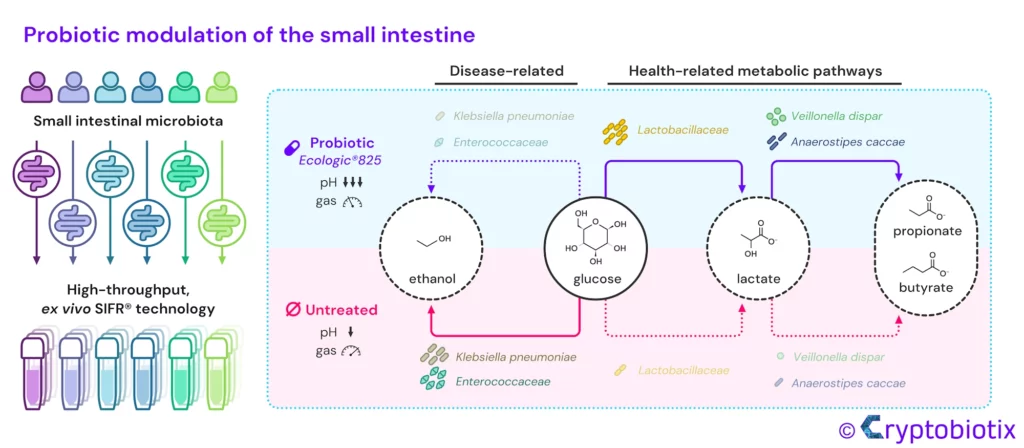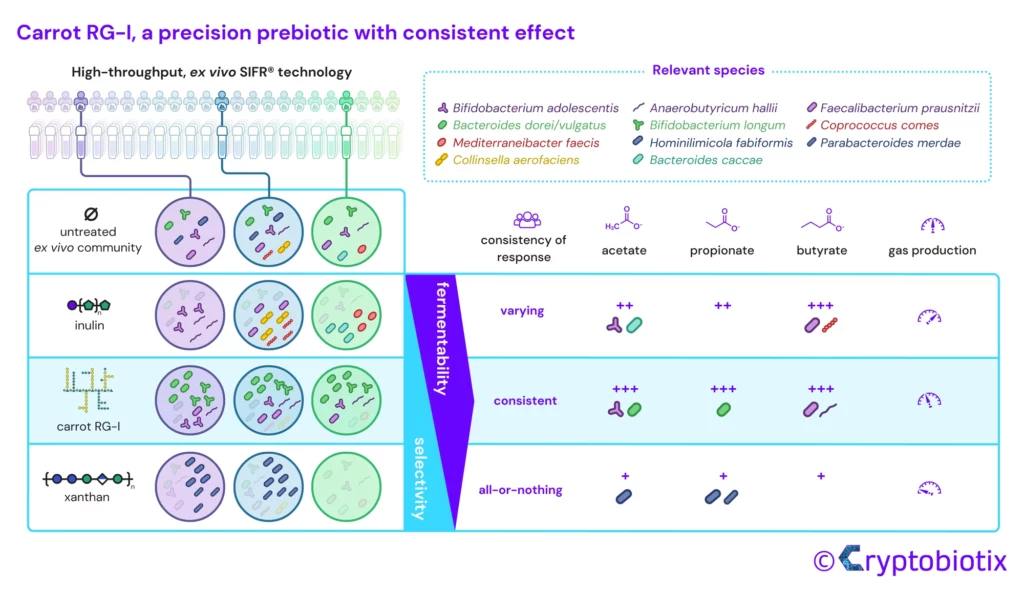
Lack of translatability of preclinical findings for the actual clinical outcome is a common problem in gut microbiome-focused product development. We introduce the SIFR technology as a high-throughput platform, predictive for in vivo compositional changes in gut microbiota for different fibre interventions (inulin, 2'FL, resistant dextrin) ...
Read More
Read More

Sweeteners are used as sugar substitutes to reduce the risk of chronic diseases related to high sugar intake, such as type 2 diabetes (T2D). Their impact on the gut microbiome is poorly understood. We used the validated, high-throughput SIFR technology to unravel their specific impact on healthy and type-2-diabetes gut microbiota ...
Read More
Read More

The mode of action of probiotics is often poorly understood. Investigating the effects of probiotics on the small intestine's microbiota is particularly challenging, due to difficulties of sampling and the absence of predictive fermentation models. We employed the high throughput SIFR® technology to decipher the mode of action of probiotic Ecologic®825 in the small intestine ...
Read More
Read More

Interpersonal differences in gut microbiota impact the success rate of product development. the predictivity of research outcomes. Using the predictive SIFR® technology, we observed that cRG-I, as a fermentable yet selective prebiotic, homogenised gut microbial composition and metabolite production, while inulin (low selectivity) and xanthan (high selectivity) increased interpersonal differences ...
Read More
Read More

HMOs and fructans were tested in parallel in the high-throughput, ex vivo SIFR technology. Age-related bifidogenic effects occurred, and health-promoting metabolites connected to gut health, immunity and the gut-brain axis were stimulated ...
Read More
Read More

Tributyrin showed promises as prebiotic in a first study. To fully convert it to butyrate, a synbiotic discovery project was set-up, across 6 donors, leveraging the high throughput of the SIFR technology. The synergy was confirmed and a putative mechanism of action could be found ...
Read More
Read More

Various bovine plasma fractions were investigated for their prebiotic potential. The SIFR was preceded by a digestion and absorption step. The immunoglobulin fraction exhibited the highest prebiotic potential, with strongest SCFA production (acetate, propionate & butyrate), through specific microorganisms (Bacteroides, Lachnoclostridium, Coprococcus) ...
Read More
Read More

